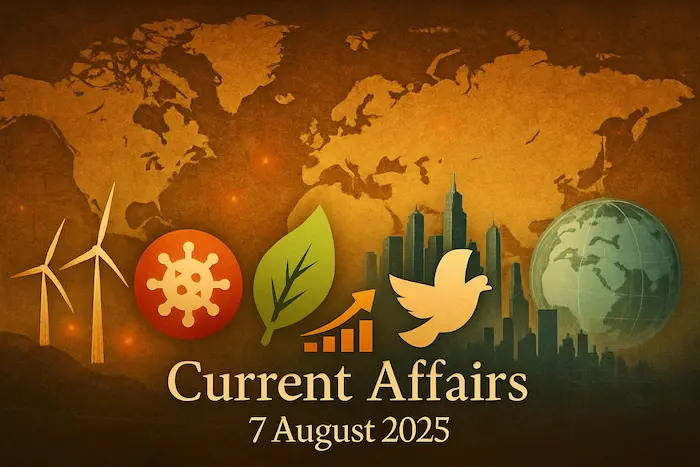1. Floods in Uttarkashi – Environment

Why in News?
Recently, flash floods and mudslides struck Dharali village in Uttarkashi, Uttarakhand, causing the death of at least four people and damaging several buildings, shops, and hotels. Unlike cloudbursts often responsible for flash floods in hilly Uttarakhand, this incident was triggered by continuous heavy rainfall for three consecutive days.
Background / Context
- Uttarkashi is part of the fragile Himalayan ecosystem, making it prone to landslides, flash floods, and other disasters.
- The region also faces added threats from climate change, which alters rainfall patterns and intensifies extreme events.
Key Facts
- Topography: Elevation ranges from 800–6,900 m; marked by rugged terrain, high ridges, and deep gorges.
- Water Sources: Origin points for Ganga and Yamuna rivers.
- Annual Rainfall: ~1,289 mm; southwest monsoon (June–Sept) brings the majority of rain.
- Flash Flood Definition: Sudden, high-intensity floods developing within minutes to hours after intense rainfall.
- Cloudburst Definition (IMD): ≥100 mm rainfall in an hour over a small area. (Not applicable in this case; only 2.7 mm recorded in 24 hrs.)
- Possible GLOF: Satellite data shows large glaciers and glacial lakes above affected sites; experts suspect a glacier burst as a contributing factor.
Detailed Explanation & Significance
- Causes in this Incident:
- Continuous heavy rainfall saturated soil, loosening slopes and triggering mudslides.
- Possible Glacial Lake Outburst Flood (GLOF) worsened flooding.
- Topography channels floodwaters and debris through narrow valleys, amplifying destruction.
- Climate Change Link:
- Increased frequency and intensity of extreme rainfall events in the Himalayas.
- Rising temperatures accelerating glacier melt, increasing risk of GLOFs.
- Implications:
- Threat to human life, infrastructure, and local economy (especially tourism).
- Disruption of transport and communication networks.
- Long-term erosion and destabilization of slopes.
Way Forward
- Strengthen Early Warning Systems: Real-time rainfall and glacier monitoring.
- Improve Infrastructure Resilience: Build flood-resistant roads, bridges, and housing.
- Regulate Construction: Strict zoning laws to prevent building in flood-prone zones.
- Community Preparedness: Disaster drills, local response teams, awareness campaigns.
- Integrate Climate Adaptation in Planning: Consider changing rainfall and glacial melt patterns in development projects.
Exam Connect – Possible Questions
Prelims
Which of the following statements is/are correct about flash floods?
1. Flash floods generally take several days to develop after heavy rainfall.
2. The India Meteorological Department defines a cloudburst as 100 mm of rain within one hour over a small area.
3. Glacial Lake Outburst Floods can sometimes trigger flash floods in Himalayan regions.
Select the correct answer using the code below:
A. 1 and 2 only
B. 2 and 3 only
C. 1 and 3 only
D. 1, 2 and 3
Answer: B. 2 and 3 only
2. Consider the following statements about Uttarkashi:
1. It is the origin point of both Ganga and Yamuna rivers.
2. It receives the highest rainfall in the northern Himalayan region.
3. Its elevation ranges between 800 m and 6,900 m.
Which of the above statements is/are correct?
A. 1 and 2 only
B. 1 and 3 only
C. 2 and 3 only
D. 1, 2 and 3
Answer: B. 1 and 3 only
Mains
1.Discuss the causes of increasing flash floods in the Himalayan region and suggest measures to mitigate their impact, with special reference to Uttarakhand.
2. How do fragile topography and climate change together contribute to the rising incidence of disasters like flash floods in the Indian Himalayan Region? Explain with suitable examples.
3. If you want, I can keep this exact format for every daily current affairs topic you share — so your notes become a ready-made HAS exam compilation.
2. PAHAL (Direct Benefit Transfer for LPG) Scheme – Polity
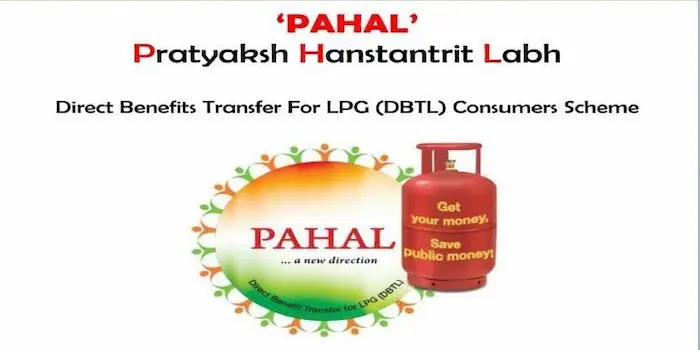
Why in News?
The Government of India has deactivated over 4 crore duplicate or inactive LPG connections under the PAHAL (Pratyaksh Hanstantarit Labh) direct benefit transfer scheme to improve subsidy targeting and prevent leakages.
Key Facts
- Launch: Initially introduced in 2013, modified and relaunched in 2014.
- Scale: Covers over 17 crore LPG consumers → largest cash transfer programme in the world.
- Objective: Ensure transparency, prevent diversion of subsidies, eliminate middlemen, and protect genuine consumer entitlements.
- Eligibility: Annual taxable income of applicant + spouse must be ≤ ₹10 lakh (as per Income Tax Act, 1961).
- Process:
- Consumer books LPG cylinder at market price.
- Subsidy amount credited directly to consumer’s linked bank account after delivery.
- Consumer Categories:
- Primary Aadhaar-Based DBT – Aadhaar linked to LPG consumer number and bank account.
- Non-Aadhaar-Based DBT – Bank account linked to LPG consumer number.
Background & Context
- Direct Benefit Transfer (DBT) Programme: Launched in 2013 to reduce subsidy leakages in various government schemes.
- Impact:
- Reduced ghost/duplicate connections.
- Better targeting of subsidies → fiscal savings for the government.
Significance
- Positives:
- Improved efficiency and targeting of LPG subsidies.
- Increased accountability in public service delivery.
- Prevented subsidy diversion for non-domestic use.
- Challenges:
- Aadhaar linking & bank account seeding issues in rural areas.
- Subsidy delays due to technical/banking errors.
- Way Forward:
- Strengthen grievance redressal mechanisms.
- Improve rural digital infrastructure for faster DBT processing.
Exam Connect – Possible Questions
Prelims
1. Under the PAHAL scheme, LPG subsidies are provided to consumers
A. In the form of a discount at the time of purchase.
B. Through direct cash transfer into their bank account.
C. As a credit in their LPG distributor’s account.
D. In the form of free refills for a fixed number of cylinders annually.
Answer: B. Through direct cash transfer into their bank account.
2. Which of the following statements is/are correct regarding the PAHAL scheme?
1. It is the largest cash transfer scheme in the world.
2. The combined annual taxable income of the beneficiary and spouse must not exceed ₹10 lakh to be eligible.
3. Aadhaar linking is mandatory for availing benefits under PAHAL.
A. 1 and 2 only
B. 2 and 3 only
C. 1 and 3 only
D. 1, 2 and 3
Answer: A. 1 and 2 only
Mains
1. Evaluate the role of the PAHAL scheme in improving efficiency and transparency in subsidy delivery. How does it address the challenges of leakage and duplication?
2. Direct Benefit Transfer schemes like PAHAL are key to welfare reforms in India. Discuss their advantages and limitations in the context of rural connectivity and inclusion.
3. Ayurveda Aahara – Governance
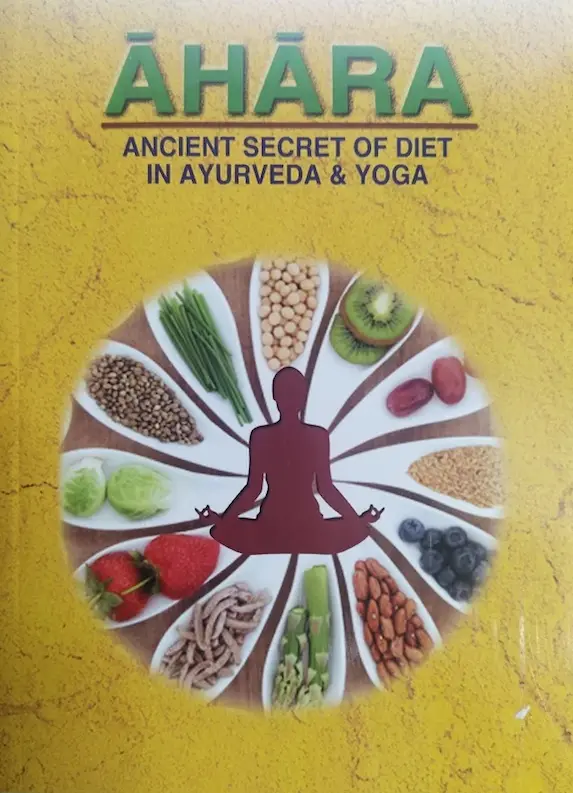
Why in News?
The Food Safety and Standards Authority of India (FSSAI), in collaboration with the Ministry of Ayush, has released an official list of food items categorized under Ayurveda Aahara. This step aims to integrate traditional Ayurvedic dietary principles with modern food safety and nutrition standards.
Background / Context
- Ayurveda emphasizes diet (Ahara) as a core pillar of health, alongside lifestyle (Vihara).
- Historically, Ayurvedic diets were seasonal, balanced, and plant-based, using natural ingredients.
- Lack of standardization and safety protocols hindered wider acceptance in the modern food industry.
Key Facts
- Definition: Food products based on Ayurvedic principles, focusing on balance (Tridosha), seasonality (Ritu), and natural ingredients.
- Regulation: Governed by the Ayurveda Aahara Regulations, 2022 under FSSAI.
- Textual Basis: Recipes and ingredients must come from authoritative Ayurvedic texts.
- Product Inclusion: New products may be proposed by Food Business Operators (FBOs) citing classical references.
- Institutional Support: Backed by the National Institute of Ayurveda; supported by the Ayush Aahara Compendium.
- Health Significance: Supports preventive health, digestive wellness, and immunity.
Detailed Explanation & Significance
- Objectives:
- Standardize Ayurvedic foods for quality and safety.
- Promote preventive healthcare through diet.
- Foster consumer trust in traditional health foods.
- Governance Relevance:
- Combines traditional knowledge systems with scientific validation.
- Aligns with India’s National Health Policy focus on integrative health systems.
- Cultural & Economic Impact:
- Revives India’s culinary heritage.
- Boosts rural economy through demand for indigenous ingredients.
- Opens opportunities for Ayurvedic food exports.
Way Forward
- Wider awareness campaigns to educate consumers on benefits.
- Encourage startups to innovate with Ayurveda-compliant foods.
- Global marketing under “Ayush Export” branding.
- Collaboration between Ayurvedic practitioners and nutrition scientists for R&D.
Exam Connect – Possible Questions
Prelims
- Which of the following statements about Ayurveda Aahara is/are correct?
1.It is regulated under the Ayurveda Aahara Regulations, 2022 framed by the Ministry of Ayush.
2.The list of items under Ayurveda Aahara must be derived from authoritative Ayurvedic texts.
3.The initiative is supported by the National Institute of Ayurveda.
Select the correct answer using the code below:
A. 1 and 2 only
B. 2 and 3 only
C. 1 and 3 only
D. 2 and 3 only
Answer: B. 2 and 3 only
2. Ayurveda Aahara aims to:
1. Integrate ancient Indian dietary practices with modern nutritional safety standards.
2. Promote seasonal and balanced diets based on Ayurvedic principles.
3. Regulate genetically modified food items in India.
Select the correct answer using the code below:
A. 1 and 2 only
B. 2 and 3 only
C. 1 and 3 only
D. 1, 2 and 3
Answer: A. 1 and 2 only
Mains
1. Discuss the significance of Ayurveda Aahara in promoting preventive healthcare and preserving India’s traditional knowledge systems.
2. “Standardizing traditional diets like Ayurveda Aahara can bridge the gap between cultural heritage and modern nutrition needs.” Discuss in the context of public health policy in India.
4. Tackling Money Laundering – Enforcement and Challenges under PMLA – Polity
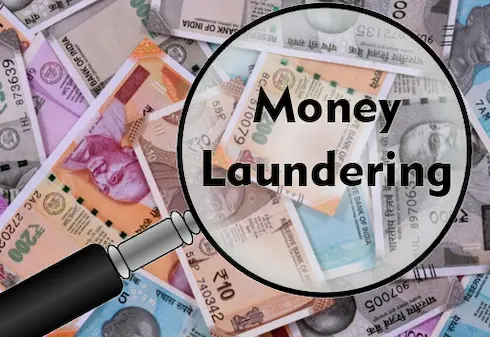
Why in News?
Since 2015, the Enforcement Directorate (ED) has initiated 5,892 cases under the Prevention of Money Laundering Act (PMLA), 2002, but secured only 15 convictions, as reported in the Rajya Sabha. This points to low conviction rates, raising concerns about enforcement effectiveness and the growing complexity of money laundering in India.
Key Facts
- Money Laundering Process:
- Placement: Introducing illicit money into the financial system (often split into smaller deposits — “smurfing”).
- Layering: Complex transactions to obscure the source of funds.
- Integration: Reintroducing cleaned money into the economy via legitimate assets like real estate or businesses.
- PMLA, 2002:
- Aligns with UN conventions & Financial Action Task Force (FATF) standards.
- Allows confiscation of property linked to crime.
- Burden of proof lies on the accused.
- Enforcement Case Information Report (ECIR) can be filed without an FIR.
- Key Case: Vijay Madanlal Chaudhary vs. Union of India (2022) — upheld several PMLA provisions but drew criticism for potential misuse.
- International Cooperation: India has Double Taxation Avoidance Agreements (DTAAs) with ~85 countries to track illicit cross-border funds.
Background & Context
- Laundromats in Finance: Entities or mechanisms that disguise ownership and move illicit money across borders, often linked to organised crime and terror financing.
- FATF Guidelines: Stress on transparency, due diligence in financial transactions, and strong cross-border cooperation.
- Challenge for India: Despite stringent law, conviction rates remain negligible due to weak investigation, complex transaction tracing, and misuse allegations.
Significance
- Positives:
- Strong legal tools for asset seizure and confiscation.
- Shifts burden to accused, reducing escape loopholes.
- Concerns:
- Low conviction rate undermines deterrence.
- Risk of political misuse against opponents.
- Weak international cooperation in tracing offshore assets.
- Way Forward:
- Improve forensic accounting & financial investigation skills.
- Strengthen institutional independence of ED.
- Implement FATF recommendations fully.
- Use technology & AI for transaction pattern analysis.
Exam Connect – Possible Questions
Prelims
1. Which of the following is/are stages of the money laundering process?
2. Placement
3. Smurfing
4. Integration
A.1 and 2 only
B. 2 and 3 only
C. 1 and 3 only
D. 1, 2 and 3
Answer: D. 1, 2 and 3
2. Under the Prevention of Money Laundering Act (PMLA), 2002:
1. The burden of proof lies on the accused.
2. An FIR is mandatory before the Enforcement Directorate can initiate proceedings.
3. Property linked to money laundering can be confiscated.
A.1 and 2 only
B. 1 and 3 only
C. 2 and 3 only
D. 1, 2 and 3
Answer: B. 1 and 3 only
Mains
1. The low conviction rate under PMLA raises questions about its enforcement efficacy. Examine the legal, institutional, and political challenges in tackling money laundering in India.
2. Discuss the importance of adhering to FATF guidelines in combating money laundering and its linkage to terror financing. How can India strengthen its international cooperation mechanisms?
5. India–Philippines Strategic Partnership: Defence, Trade, and Maritime Cooperation – International Relations
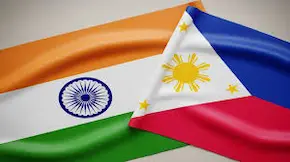
Why in News?
During Philippines President Ferdinand Marcos Jr.’s first visit to India, the two countries elevated their ties to a strategic partnership with a focus on defence collaboration, maritime security, and trade expansion.
Key Facts
- Diplomatic Relations Established: 1949.
- Bilateral Trade:
- Crossed USD 3 billion for the first time in 2022–23.
- Reached USD 3.53 billion in 2023–24.
- Target: Double by 2030.
- Defence Cooperation:
- BrahMos missile sale worth USD 375 million to the Philippines — first major defence export of this scale by India.
- Economic Cooperation:
- India exports: Engineering goods, pharmaceuticals.
- Philippines exports: Semiconductors, electrical machinery.
- People-to-People Links:
- Scholarships under ITEC programme.
- Youth exchanges for cultural and academic cooperation.
- Regional Context: Shared interest in Indo-Pacific stability, free and open sea lanes.
Background & Context
- Historical Links: Democratic values, anti-colonial struggle, and gradual cooperation since independence.
- Look East to Act East: Philippines has been an important partner in India’s Act East Policy.
- Maritime Security Significance: South China Sea disputes make Philippines a key partner for India’s freedom of navigation advocacy.
Significance
- Positives:
- Strengthens India’s presence in Southeast Asia.
- Boosts defence exports, supporting Atmanirbhar Bharat goals.
- Enhances maritime cooperation amid China’s assertiveness in the South China Sea.
- Expands trade diversification beyond traditional partners.
- Challenges:
- Balancing relations with ASEAN unity and not antagonising China.
- Need for deeper private sector involvement in trade growth.
- Way Forward:
- Expand defence training programmes.
- Facilitate trade in emerging sectors like digital services.
- Institutionalise annual 2+2 ministerial dialogue.
Exam Connect – Possible Questions
Prelims
1. Consider the following statements regarding India–Philippines relations:
1. The two countries established diplomatic relations in 1949.
2. The Philippines is the first foreign buyer of India’s BrahMos missile system.
3. India’s major imports from the Philippines include petroleum products.
Which of the statements given above is/are correct?
A. 1 and 2 only
B. 2 and 3 only
C.1 and 3 only
D. 1, 2 and 3
Answer: A. 1 and 2 only
2. The BrahMos missile, exported to the Philippines, is jointly developed by India and which of the following countries?
A. Israel
B. Russia
C. France
D. USA
Answer: B. Russia
Mains
1. Evaluate the strategic significance of India’s defence cooperation with the Philippines in the broader Indo-Pacific context.
2. India–Philippines relations have evolved from diplomatic goodwill to a strategic partnership. Discuss the drivers of this transformation and its potential impact on regional stability.
6. Assets Under Management (AUM) – Growth in India’s Mutual Fund Industry – Economy
Why in News?
India’s Mutual Fund (MF) industry has achieved record growth with Assets Under Management (AUM) reaching ₹74.40 lakh crore in June 2025 — a sevenfold increase over the past decade, signalling deepening financial sector maturity and higher retail investor participation.
Key Facts
- AUM Definition: Total market value of financial assets (equities, bonds, etc.) managed by an investment firm on behalf of clients.
- Current Level: ₹74.40 lakh crore (June 2025).
- Growth Drivers:
- Net investor inflows.
- Strong equity market performance.
- Dividend reinvestments.
- Significance of AUM:
- Reflects fund size & investor confidence.
- Indicates fund manager performance & popularity.
- Enables better portfolio diversification.
- Influences management fees & minimum investment limits.
- Mutual Fund Structure: Investors purchase units; value per unit is Net Asset Value (NAV) — changes with market conditions.
Types of Mutual Funds
Based on Asset Class:
- Equity Funds: Large-cap, mid-cap, small-cap.
- Debt Funds: Bonds, fixed-income instruments.
- Hybrid Funds: Combination of equity & debt.
Based on Investment Objective:
- Growth Funds – long-term capital gains.
- Income Funds – regular income via dividends/bonds.
- Liquid Funds – short-term debt, high liquidity.
- Tax-saving Funds (ELSS) – tax benefits under Sec 80C.
- Pension Funds – retirement savings focus.
Based on Structure:
- Open-ended Funds: Entry/exit anytime.
- Closed-ended Funds: Fixed maturity, limited subscription window.
- Interval Funds: Transactions only at set intervals.
Background & Context
- Mutual Fund Penetration: Increasing retail participation due to SIP (Systematic Investment Plan) popularity and fintech platforms.
- Regulatory Body: SEBI oversees MF operations to ensure transparency and investor protection..
Significance
- Positives:
- Diversifies household investments beyond gold & real estate.
- Strengthens domestic capital markets.
- Improves corporate access to long-term funds.
- Concerns:
- Market volatility risk.
- Need for improved investor awareness to avoid mis-selling.
- Way Forward:
- Enhance financial literacy campaigns.
- Expand rural access to MF products.
- Strengthen investor grievance redressal mechanisms.
Exam Connect – Possible Questions
Prelims
1. Which of the following best describes “Assets Under Management” (AUM) in the context of mutual funds?
A. The total profit earned by a mutual fund in a financial year.
B. The total market value of all assets managed by a mutual fund on behalf of its investors.
C. The net income after deducting management fees from a mutual fund’s investments.
D. The maximum investment amount allowed in a mutual fund.
Answer: B. The total market value of all assets managed by a mutual fund on behalf of its investors.
2. Which of the following statements is/are correct about mutual funds in India?
1. Net Asset Value (NAV) represents the price per unit of a mutual fund scheme.
2. Closed-ended mutual funds can be purchased or redeemed at any time.
3. ELSS (Equity Linked Savings Scheme) provides tax benefits under Section 80C of the Income Tax Act.
A. 1 and 2 only
B. 2 and 3 only
C. 1 and 3 only
D. 1, 2 and 3
Answer: C. 1 and 3 only
Mains
1. Examine the factors contributing to the rapid growth of the mutual fund industry in India. What are the challenges in expanding mutual fund penetration in rural areas?
2. Discuss the role of Assets Under Management (AUM) as an indicator of financial sector development and investor confidence in India.
7. The Technocratic Calculus of India’s Welfare State – Governance

Why in News?
India’s welfare governance is witnessing a shift from rights-based models to technocratic, data-driven systems. This transition, powered by Aadhaar integration, Direct Benefit Transfer (DBT) schemes, and digital grievance redressal platforms, is transforming how social welfare is delivered and experienced.
Background / Context
- Post-2005 (after landmark legislations like MGNREGA and RTI), welfare was rights-based, ensuring entitlements through legislation.
- Since the 2010s, the focus has moved to technological efficiency, targeting beneficiaries directly through digital identity and cash transfers.
- This change aligns with global trends where governments use data analytics and automation to shape policy.
Key Facts
- Technocratic Governance: Prioritizes measurable outputs, auditable systems, and data-centric decision-making.
- Aadhaar & DBT: Enabled consolidation of welfare schemes and direct transfers to beneficiaries’ bank accounts.
- Centralized Complaint Portals: Digital grievance systems for faster resolution, but risk creating distance from grassroots accountability.
- Declining Social Spending: Reduced allocation in sectors like minority welfare, nutrition, labor protection, and social security.
- RTI Under Strain: Weakening transparency mechanisms amidst centralized digital governance.
Detailed Explanation & Significance
- Advantages of Technocratic Approach:
- Minimizes leakages in welfare delivery.
- Allows real-time monitoring and targeted assistance.
- Improves administrative efficiency and speed.
- Concerns:
- Democratic Deficit: Less space for public debate, deliberation, and participatory decision-making.
- Algorithmic Barriers: Automated eligibility checks may exclude genuine beneficiaries.
- Over-centralization: Weakens local institutions and citizen engagement.
- Equity Concerns: Digital divides can marginalize those without internet or tech access.
- Governance Relevance:
- This shift reflects a deeper question: Should welfare be only efficient or also empowering?
- Balancing technology with human-centric governance is key for inclusive development.
Way Forward
- Integrate Local Knowledge: Empower Panchayati Raj Institutions and local bodies in welfare design and monitoring.
- Strengthen RTI and Transparency Mechanisms.
- Digital Inclusion Measures: Ensure offline alternatives and grievance support for the digitally excluded.
- Participatory Platforms: Use technology to foster citizen dialogue, not replace it.
- Balanced Policy: Merge efficiency goals with rights-based, democratic accountability.
Exam Connect – Possible Questions
Prelims
1. With reference to India’s welfare governance, consider the following statements:
1. Direct Benefit Transfer (DBT) aims to reduce leakages in subsidy distribution by transferring benefits directly into beneficiaries’ bank accounts.
2. The Aadhaar system was introduced through an amendment to the Right to Information Act, 2005.
3. Centralized grievance platforms can sometimes reduce grassroots-level accountability.
Which of the above statements is/are correct?
A. 1 only
B. 1 and 3 only
C. 2 and 3 only
D. 1, 2 and 3
Answer: B. 1 and 3 only
2. In the context of technocratic governance, which of the following is/are potential risks?
1. Algorithmic exclusion of genuine beneficiaries.
2. Weakening of participatory democratic institutions.
3. Increased leakages in welfare delivery.
Select the correct answer using the code below:
A. 1 and 2 only
B. 2 and 3 only
C. 1 and 3 only
D. 1, 2 and 3
Answer: A. 1 and 2 only
Mains
1. Discuss the shift from rights-based welfare governance to technocratic, data-driven models in India. What are its advantages and challenges? Suggest ways to ensure efficiency without compromising democratic values.
2. “Efficiency in welfare delivery must not come at the cost of accountability and citizen empowerment.” Critically evaluate in the context of India’s digitized welfare systems.

